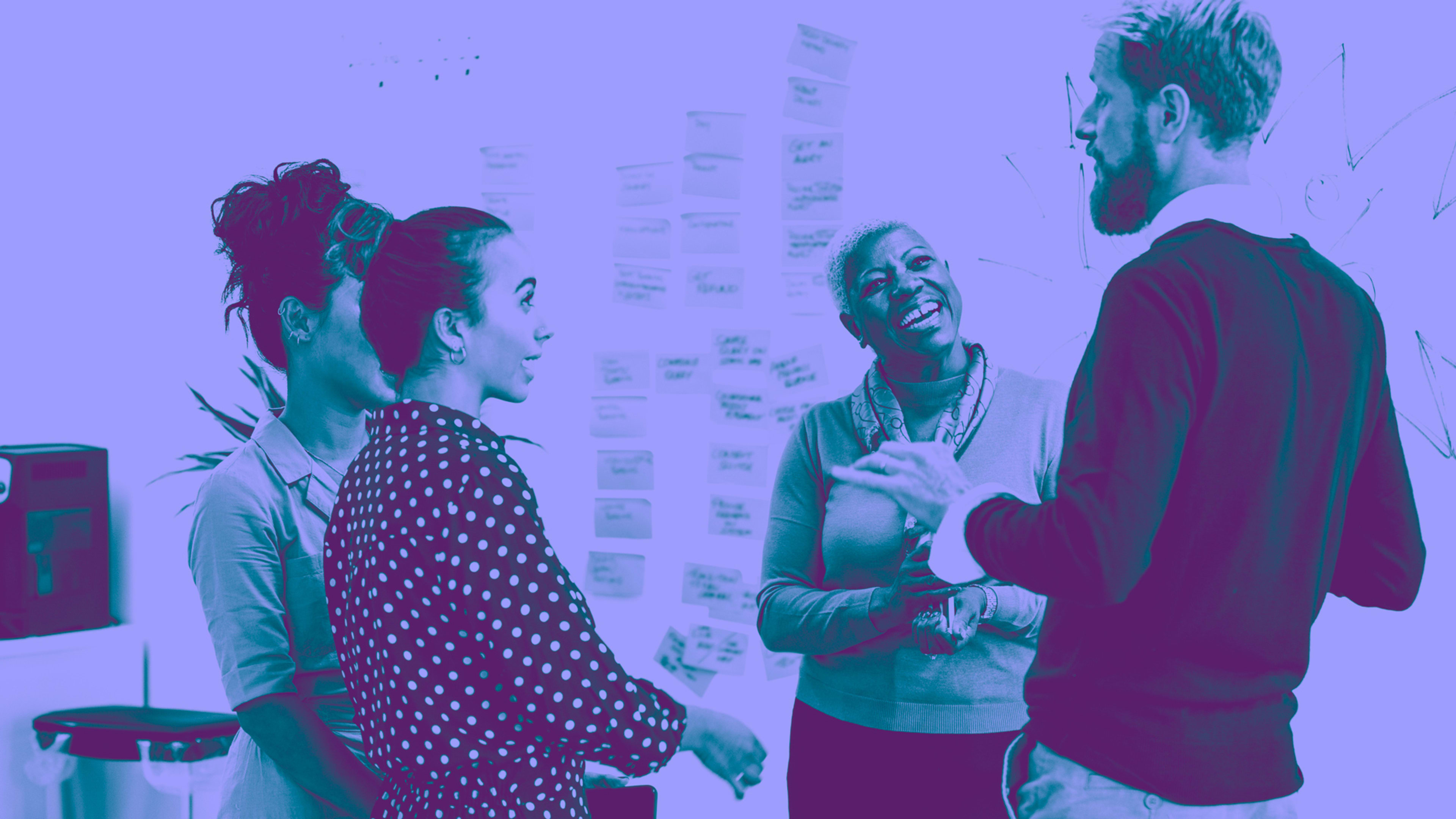In any given workplace, you’re likely to find employees from across four generations, from near retirement Boomers to newly graduated Gen Z. Bridging an age gap like that can be daunting, but it’s also a chance for folks of all ages to learn from one another’s unique experiences.
Lindsey Pollak, a career and workplace expert with a focus on generational diversity, says employers should look at the multigenerational workplace not as a challenge, but as an opportunity.
“We’re a multigenerational world. We’re a multigenerational economy. So if you are only speaking to the needs or the communication style of one generation or two generations, you’re missing out on tremendous opportunity, and tremendous wisdom, and tremendous intelligence and ideas,” Pollak says.
But cultivating a multigenerational workplace is easier said than done, with different generations bringing their own strengths and weaknesses to the table. Here are four areas where those differences can supplement each other to increase productivity and collaboration across generations.
Technology
Gen Z is the first truly digital native generation, so they are naturally savvy with tech that can be confusing or unfamiliar to older workers. Older generations can rely on Gen Z to help them adapt—but in turn, Gen Zers can look to their senior coworkers for advice on what to do when technology isn’t the answer.
Donna Butts, executive director of intergenerational advocacy organization Generations United, says in situations where technology is either not functioning or when using older methods is simply more effective, Gen Zers can learn from more experienced generations how to operate.
“We used to be able to work without technology, so there are things we can do. There are things we can address and solve,” Butts says. “It’s the different experiences and skills that people bring.”
Communication styles
Different generations will often have different preferred modes of communication, whether that’s talking in person, on the phone, over email, or through a Slack message. No one way is inherently better or worse, but when two conflicting modes of communication butt up against each other, it’s easy for conflict to arise.
“I find that sometimes it’s a little bit more difficult for younger people to express themselves verbally, or with other people, because they’re so used to expressing themselves over technology,” Butts says. “And it’s more complicated for older people, oftentimes, to express themselves over technology.”
The answer for all parties is to shift the way we think about communication, says Pollak.
“It’s like, if you speak German, and I speak Japanese, I could speak the best Japanese in the world, but you’re just not going to understand me. It’s not going to work,” she says. “It’s this idea that communication is not about how you want to communicate or think people should communicate; it’s about understanding and accepting and asking how the other person wants to receive the message.”
Asserting oneself
Gen Z has gained a reputation for wanting more out of the workplace, including prioritizing mental health and not settling for substandard working conditions.
“Unlike prior generations that came into the workplace and accepted what was offered, Gen Z is coming in and making lots and lots of first-time-ever demands in terms of flexibility of work, in terms of vacation time, and in a lot of other ways,” explains Chuck Underwood, founder and principal of generational consulting firm The Generational Imperative, Inc.
Being assertive about what they want has earned Gen Zers labels like “spoiled” or “needy” from older generations, says DeAndre Brown, the self-proclaimed “corporate baddie” of TikTok. But older generations could take a page out of Gen Z’s book, he says, and not be afraid to ask for what they want from employers.
“We’re just doing the things that other generations were too afraid to do, and also probably couldn’t do at those times,” Brown says. “But as we see things transitioning and see the things that are now normalized, we can now make those changes and stand up for ourselves more now than we probably could in the past.”
Patience and loyalty
Gen Z’s ferocity when it comes making demands is a double-edged sword. It’s good to stand up for what you want, but it can also damage both your own career and your company to abandon a job simply because it’s not picture-perfect.
“You have to remember, things don’t change overnight,” Brown says. “I feel like sometimes we’re very quick to say, ‘Well, if it’s not this way, then I’m not doing it. I’m quitting. I’m leaving.’ But little, small progress is still progress.”
Underwood says Gen Z’s current ability to make demands is due to the state of the labor market: there are currently 10.3 million job openings in America, but only 6 million unemployed working-age Americans. That means employers are willing to meet Gen Z’s demands—but that won’t always be the case. Gen Zers could learn from the career loyalty of generations like Gen X, and recognize that there is value in staying put at a company through a period of growth.
“It’s okay to demand everything that you want to demand, but you may not get it all. Because we are in a temporary situation where the field is tilted more heavily in favor of employees and employers, and that will end, and Gen Z needs to be prepared to demand realistic job packages,” advises Underwood.
Underwood also says to take sweeping generalizations about Gen Z with a grain of salt. While we can make observations, they should always be contextualized with the fact that Gen Z has only been working-age for a few years, and its long-term business philosophies and impact remain to be seen.
“They’re still too new to the workplace,” Underwood says. “We still haven’t been able to measure the strengths and weaknesses that they bring.”
Recognize your brand’s excellence by applying to this year’s Brands That Matter Awards before the early-rate deadline, May 3.
